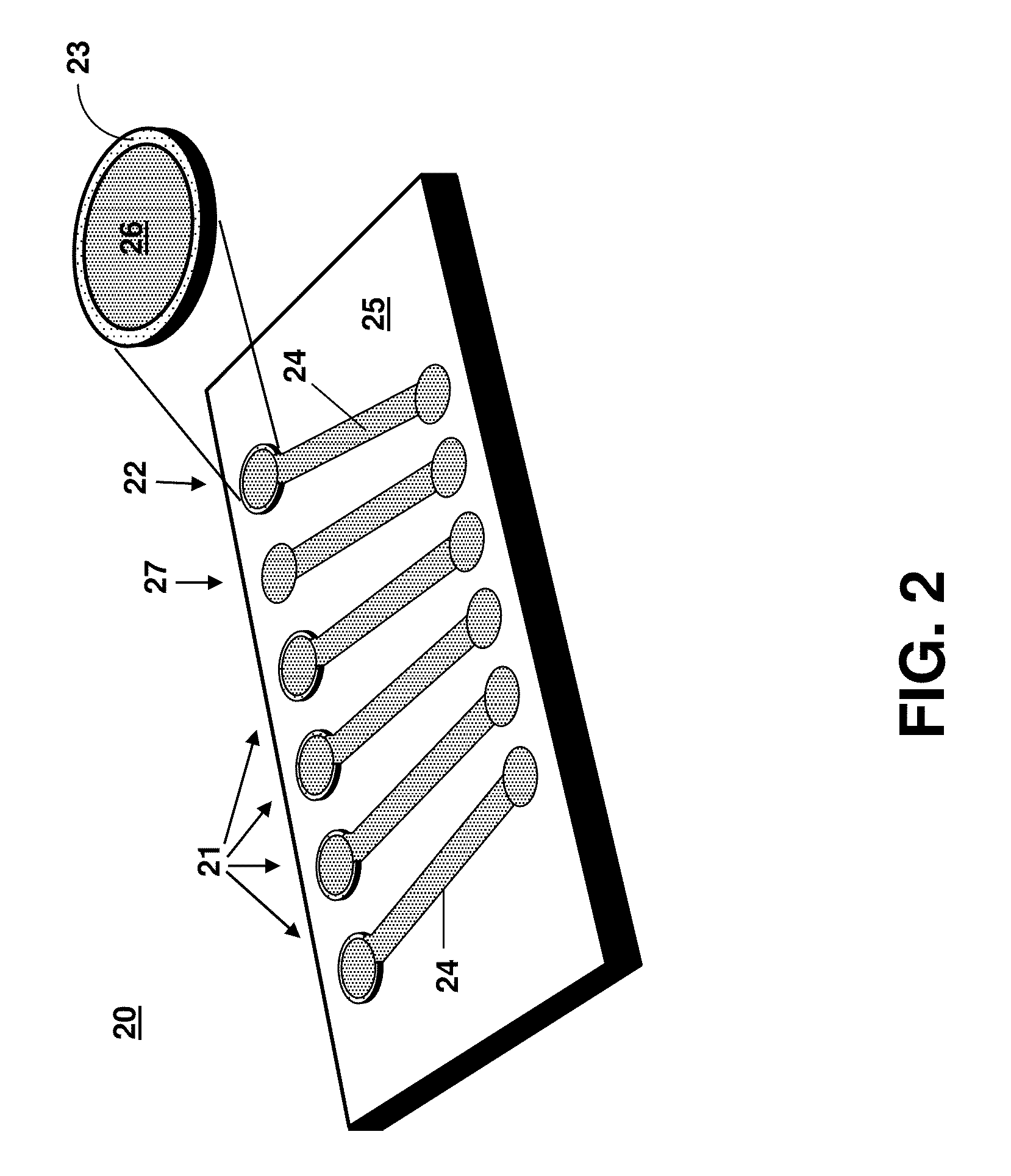Microfluidic device for acoustic cell lysis
- Summary
- Abstract
- Description
- Claims
- Application Information
AI Technical Summary
Benefits of technology
Problems solved by technology
Method used
Image
Examples
Embodiment Construction
[0030]The present invention is directed to a microfluidic acoustic-based cell lysing device that can be integrated with on-chip nucleic acid extraction. Using a bulk acoustic wave (BAW) transducer array, acoustic waves can be coupled into microfluidic cartridges resulting in the lysis of cells contained therein by acoustic pressure. Cellular materials can then be extracted from the lysed cells. For example, nucleic acids can be extracted from the lysate using silica-based sol-gel filled microchannels, nucleic acid binding magnetic beads, or NAFION-coated electrodes. Integration of cell lysis and nucleic acid extraction on-chip enables a small, portable system that allows for rapid analysis in the field.
[0031]FIG. 1 shows a perspective top-view schematic illustration of a device 10 that can be used for cell lysis by localized acoustic pressure. The acoustic-based microfluidic lysing device 10 comprises at least one acoustic transducer 12 disposed on a top lid 13 of a channel 14 that ...
PUM
 Login to View More
Login to View More Abstract
Description
Claims
Application Information
 Login to View More
Login to View More - R&D
- Intellectual Property
- Life Sciences
- Materials
- Tech Scout
- Unparalleled Data Quality
- Higher Quality Content
- 60% Fewer Hallucinations
Browse by: Latest US Patents, China's latest patents, Technical Efficacy Thesaurus, Application Domain, Technology Topic, Popular Technical Reports.
© 2025 PatSnap. All rights reserved.Legal|Privacy policy|Modern Slavery Act Transparency Statement|Sitemap|About US| Contact US: help@patsnap.com



